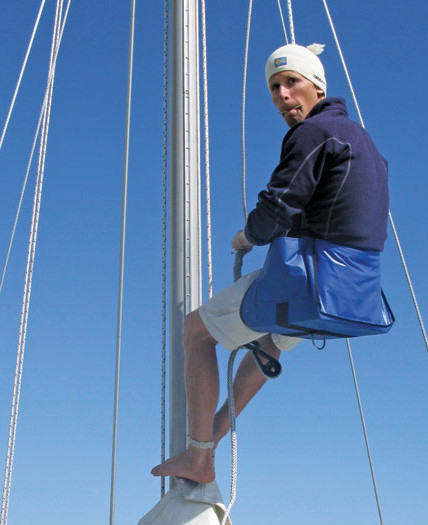
There are only two things that a sailor needs to do to enjoy his time on the water – keep the water out of the boat, and keep the rig up.
Everything else simply adds convenience. Boats nowadays have motors, but it’s the rig and sails that give you all the fun. And a sail rig inspection is the first step in ensuring that that fun lasts in the long-term.
How to Inspect your Sail Rig
Start by determining the rig’s age – after 15 years in a saltwater environment a rig is unsafe.
Head belowdecks. The chainplates should be visually checked, particularly their bolts. On older boats, remove the chainplates, as crevice corrosion – stainless steel’s kryptonite – begins precisely in the area where the metal passes through the deck and can easily go unnoticed.
On deck, check each clevis pin, particularly on furling gear. Pins should fit exactly in both the chainplate and shroud termination to avoid point loading. Look for signs of pitting and excessive wear. Each pin should have a split pin securing it, spread to 15 degrees, and coated in silicone.
Bottle screws and the split pins that hold them in place should never be taped. This is simply an invitation for water to collect and initiate corrosion. Instead, split the pins 180 degrees, and apply a dab of silicone. Inspect the wire terminations. Vertical hairline cracks on swage fittings are a sure indication of imminent failure. Mechanical fittings should appear undistorted.
Aloft, start at the masthead and check that all clevis pins are correctly sized and have split pins securing them in place (not split rings). Look for hairline fatigue cracks in each fitting. Check that all sheaves are in place (and spin) and that halyards on furlers are sound and not chafed. Look for broken strands and distortion in each wire.
Spreaders should bisect the angle of the shroud they support (tilting upwards) and be symmetrical. Ensure that the shroud is secured in the spreader tip with a strong wire seizing. Inspect discontinuous rigging fittings as you would at deck level.
Finally, check that all the shrouds are tensioned symmetrically – use the same arm to check both sides. Sight up the sail track with your dominant eye and ensure that the mast is in column.
Next month we’ll look at sail rig tuning and getting the most performance out of your boat’s sailing set-up.
Andy Schell is the former editor of All at Sea SE. He worked as a rigger in Annapolis at Southbound Cruising Services, and is a professional yacht captain. Follow him online at 59-north.com.




